Travel v. Climate: Tonic or Toxic?
VamoScience & Tech. (Premise).
TRAVIRONMENT: Climatitis, Sea to Sea.
COVID-19: Going Viral On a Global Scale.
Getting a Grip On the Grippe. (Premise +).
(12/11/23): Headed Into Flying’s Guiltless Age?—Billed as the dawn of ‘guilt-free flying’, a Virgin Atlantic 787 recently blazed new contrails by traversing the Atlantic Ocean under alternative green power. Traveling from London’s Heathrow Airport to New York’s JFK, it was the first large passenger jetliner to ‘cross the pond’ on sustainable aviation fuels (SAFs).
The skybreaking flight, supported by the UK’s Civil Aviation Authority, energy giant British Petroleum (BP) and Rolls-Royce engines, carried some 50 metric tonnes (55 tons) of SAF, apparently derived from waste fats and corn 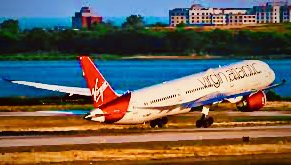 product residuum. Bigwig passengers lauded it as a “momentous UK achievement in de-carbonizing long-haul aviation”, a significant stepping stone toward overall Net-Zero jet fuels by 2050.
product residuum. Bigwig passengers lauded it as a “momentous UK achievement in de-carbonizing long-haul aviation”, a significant stepping stone toward overall Net-Zero jet fuels by 2050.
(2/28/24): Stepping, However Lightly.
Then again it’s a baby step, at best. Currently, commercial air travel generates about 2.4% of carbon emissions by humans, releasing nitrous oxides, oxidized sulfurs, water vapor and sooty contrail cirrus. Medium- to long-haul flights are responsible for 73% of that, emitting 100 times more than trains, buses or fully loaded automobiles. This while the global ‘fleet’ of commercial jetliners is projected to double by 2042.
Hence the going is getting greener by the mile, and SAF proponents say sustainable fuels can eventually cut US carbon emissions by some 80%. Typically blended from a concoction of crops, algae, household waste, cooking oils and the like, such cleaner SAF energy sources promise to deliver Mother Earth from fossil fuel suffocation—tropo- to stratosphere. Woodsy biomass fuels are liquified from equal parts carbon and oxygen, removing CO2; sustainable biofuels also derive from corn and sugar cane ethanol—all affording robust renewal power, carbon capture and sequestration, so long as various ‘feedstocks’ remain potent and plentiful.
Decarbonization vs. Recarbonization.
Still, SAFs now account for only 0.1% of aviation fuel burned worldwide, and are not projected to reach even 2% of aviation fuel supply until 2025. being comparatively costly (up to five times higher than today’s hydrocarbonic jet fuel) to produce, with optimal ‘feedstocks’ of limited supply to date. And even though all new aircraft are expected to be SAF compatible by 2030—according to Boeing and Airbus brass—regulations presently ban running on 100% SAFs anyway. Nevertheless, Southwest Airlines, for one is substantially buying in for the long haul.
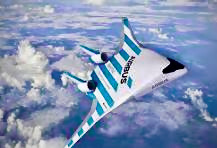 Which is perhaps why Airbus SE plans to outfit ZEROe planes burning sustainable hydrogen power. Comparatively light, universally abundant and carbon zero, hydrogen is considered a super ‘clean sheet’ technology. It is a gas that is compressed and liquified via extreme cooling into aviation fuel burned in turbines. Downside, hydrogen requires more energy to derive from precursors than it produces; takes 4-5 times more storage space than jet kerosene and is still ‘Hindenburg’ airship flammable.
Which is perhaps why Airbus SE plans to outfit ZEROe planes burning sustainable hydrogen power. Comparatively light, universally abundant and carbon zero, hydrogen is considered a super ‘clean sheet’ technology. It is a gas that is compressed and liquified via extreme cooling into aviation fuel burned in turbines. Downside, hydrogen requires more energy to derive from precursors than it produces; takes 4-5 times more storage space than jet kerosene and is still ‘Hindenburg’ airship flammable.
Yet hydrogen also can be processed into fuel cells—creating electric power by a ‘catalyst electrode” separating its molecules into proton-electron cathodes, which combine with oxygen and the electrons to yield water and heat. Resulting fuel cells may be cleaner than burning hydrogen in turbines, but are a complex, costly business with suspect contrails. So thinks Boeing, although Airbus is clearly onboard with 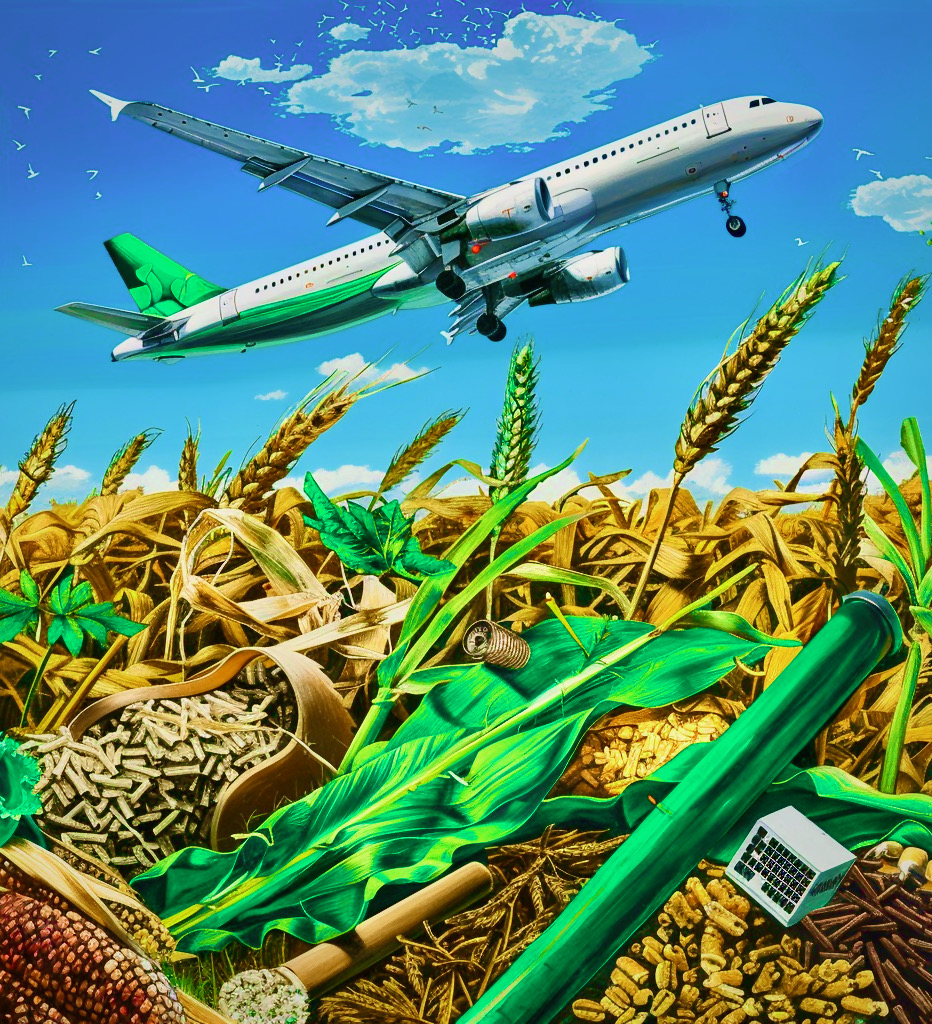 the turbine approach, envisioning hydrogen powered bat-winged airliners by 2035—even with the necessary hydrogen infrastructure as far off as 2040.
the turbine approach, envisioning hydrogen powered bat-winged airliners by 2035—even with the necessary hydrogen infrastructure as far off as 2040.
Meanwhile other eFuels are turning to captured carbon dioxide or monoxide alternatives, if not hydrogen or electric powered tube & wing planes and ‘blended wing’ (boomerang shaped) aircraft. As for electric powered flight, lithium-ion battery technology is currently too heavy to take electric passenger aircraft far at all, at least until lithium-air takes off, with prospects better for local/ regional transport (e.g., urban air mobility) than longer haul. Indeed, lithium-ion battery packs may not power a single-aisle 737 or A320 airliner some 1,200 nautical miles until 2050 or beyond.
Nevertheless, this is only a whiff of how such alternative/sustainable power sources are scaling. From the looks of it, But whichever way this green fuel future flows, Vamigré will fly with it, guilt and gasbag free. (MTC…)![]()
(8/7/23): Thievin’ On A Jet Plane?—Forget toying with Barbie, when we can fly with T-Swizzle and Kylie in their PJs, Drake and Elon hightailing along as zillionaire wingmen. We’re talking private jets here, those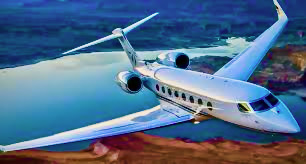 sleek VIP/P1 wonders that are increasingly streaking across the upper reaches of our teeming skies.
sleek VIP/P1 wonders that are increasingly streaking across the upper reaches of our teeming skies.
Really, stiletto darts to full-on Dreamliners, they’re tricked out with uniformed crews and staffs, rad beds and heads, gourmet galleys and winebars, steambaths and plush everything else—skimming the very stratosphere, pushing toward Mach One. What’s not to crave and covet?
So no surprise that more private jets than ever are plying airspaces the world over, one in six flights, up 34% over pre-pandemic times—posh, self-contained alternatives to ‘barbaric’ commercial air travel. Indeed Airbus Corporate Jets reported record sales for 2022, while private aviation analysts not only data point to an “…immature industry catering to a tiny (though growing) proportion of very wealthy people”, but to the rapid normalizing of such sky-high-end travel.
Point being, ‘that after one PJ flight, you don’t want anything less: the ease, convenience, and level of service are hard to top—not just for business, but special events and adventure travelers seeking the next exotic thrill’. That more people than ever are willing to spend thousands of dollars and more per seat to ‘get places at their own schedules, everything well tailored to their itineraries—even with exclusive private airports at their service.
Witness lofty, lavish status symbolism, alright—price being no object for the fat wallet jet-set. But at what cost, opportunity and climate wise?
Conspicuous Consumption or Corruption?
According to Greenpeace, 50% of all aviation carbon emissions in 2018 were caused by only 1% of the world’s population. European Union Transport and Environment (T&E) estimates that private jetters account for 5-14 times more carbon pollution than a commercial airline passenger per flight (let alone 50 times more than high-speed rail riders)—even though only 0.0008% of the global populace 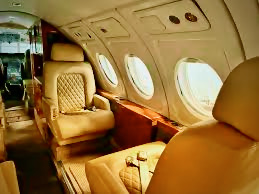 actually own these PJs.
actually own these PJs.
Moreover, while private jets traverse some 15% of the earth’s airspace, they pay barely 2% of the fees for airports and air traffic system costs, public and private. Which suggests that the rest of us are effectively paying the bulk of their freight by covering public infrastructure expenditure for private sector excess, if not wanton misuse/abuse.
This, as direct commercial airline traffic is reasonably available for some 72% of private aviation flights. Deeper digging finds that as much as 40% of private jet flights are for short distances, and often are on ’empty legs’. Social media are flush with viral exemplars of Jenner’s 13-minute flight and Musk’s 15-minute hops—with all the knee-jerk online shaming that incurs.
Hands Off Our Privates.
Well, pardon our footprints, counter the PJetters, but a good many of those short flights are for ferrying stored aircraft, or repositioning them for future assignments. Besides, they argue, private jets actually account for only 2% of all aviation emissions, particularly compared to ‘fuel-guzzling’ airliners.
Their bottom line is private/corporate jets are critical to the efficiency and safety of companies doing business and making deals. Anyway, they say, a fair number of these private jets are allocated to fractional and/or club usage/ownership, or leased/rented out—’deadhead’ flights even being ‘hitchhiked’ on occasion 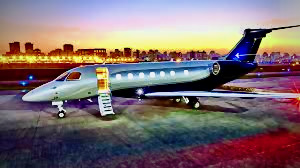 —thereby somehow lightening the per-person PJ load, more or less spreading the wealth. They posit the industry is duly sensitive to climate sustainability—that operators conscientiously go the offset credits route, that one in five private jet customers even opt for Sustainable Aviation Fuel (SAFs) when booking trips.
—thereby somehow lightening the per-person PJ load, more or less spreading the wealth. They posit the industry is duly sensitive to climate sustainability—that operators conscientiously go the offset credits route, that one in five private jet customers even opt for Sustainable Aviation Fuel (SAFs) when booking trips.
Environmentalists pushback as how those very carbon neutrality efforts are mere ‘fig leaves’, given “polluting machine” PJs’ cumulative impact on the climate writ large—also noting that SAFs remain 50% more expensive than regular kerosene, and still thrust CO2 into the atmosphere, just like fossil fuels. Further, commercial airliners may burn more jet fuel, but they carry more people to share the emission cost (per capita) than the typical one-to-ten passengers aboard a private jet.
What’s more, say climate activists, those ‘quick trips’ actuate the least efficient aspects of an aircraft’s flight cycle: from engine start up and taxiing to takeoff and climbing to cruising altitude. As for business efficacy, why do PJ trips notably peak over the winter holidays and summer months? And when it comes to climate sensitivity, put your money where your Mach is.
Taming the Shame.
So high time to cool some jets here all around. For one thing, private jets are not exactly regulated in the US anyway—despite this country being where they traffic the most. By comparison, EU’s T&E officials already look to throttle short-haul PJ flights when/where there are viable rail alternatives—incidentally a move spearheaded by France, which along with the Brexited UK, leads Europe’s PJ ‘pollution aircade’.
Otherwise, environmentalists’ seek to counter-private jet measures on both sides of the pond entail forceful 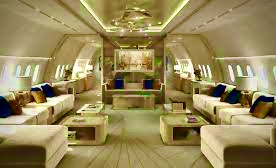 taxation (or duties) levied against the fares of such ‘privileged’ passengers; or on PJ operators and their jet fuel (per gallon), including SAFs. Yet any excise efforts are sure to be bullseyed by industry lobby/PR gunners, large and small.
taxation (or duties) levied against the fares of such ‘privileged’ passengers; or on PJ operators and their jet fuel (per gallon), including SAFs. Yet any excise efforts are sure to be bullseyed by industry lobby/PR gunners, large and small.
But outright private jet bans? Pie in the sky thinking at best, just this side of strafing Amendment Two. For while PJs may be going faster and farther, they aren’t going anywhere. Besides, it can be legitimately argued that such fuel thirsty biz jets can be critically useful in emergency situations. Even as private, if not stealth air travel poses safety/security issues of aircraft ownership (e.g., shell registration), piracy and illicit usage: from crime and drug smuggling to domestic/international terrorism.
Problem is, the very celebs and high rollers able to steal away on these lightning, luxurious aircraft have the requisite clout and resources to scale up R&D techno-innovation that could decarbonize the aviation industry well before some gauzy 2050 goal. How? By reassessing the enviro consequences of their PJ exploits/excesses for starters, finer tuning their public message, instead of just romping and trolling around on our dime.
Then again, are the rest of us travelers so dutifully keener on clearer, bluer skies? Or are we just green with envy… (MTC…)![]()
(7/31/23): Refueling the Climate Debate.—SAFfice to say, progress is being made on the environmentally sustainable jet-fuel front, and many major airlines are onboard the world over. With a flight plan to net zero carbon emissions by 2050, carriers such as American, United and Delta are signing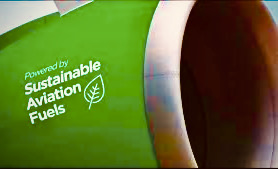 on for a sustainable aviation/jet fuel blend future that is projected to reduce such ‘dirty’ jet engine discharges by up to 80%.
on for a sustainable aviation/jet fuel blend future that is projected to reduce such ‘dirty’ jet engine discharges by up to 80%.
Just stir veggie and coconut oil, the beef fat and various carbon waste into a kerosene cocktail, ace, if the airline industry is ever going to get beyond the current 0.1% of SAF blended fuel, and right with the skies. So insist climate analysts, activists and sundry ‘greenagers’, who point to a HEFA process that pulls oxygen from and pumps hydrogen into used animal fat/droppings and vegetable oil, thereby melding with conventional kerosene to form the SAF jet fuel blends of today.
US firms like World Energy, Fulcrum BioEnergy and LanzaTech are at the leading edge of this technology, 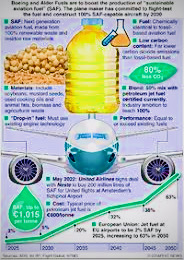 as are the Netherlands’ SkyNRG and Neste Oil of Finland. Meanwhile Colorado-based companies like Gevo and Alder Fuels develop SAF formulations from fermented corn crops and farm/forestry waste (albeit through oil industry infrastructure) respectively.
as are the Netherlands’ SkyNRG and Neste Oil of Finland. Meanwhile Colorado-based companies like Gevo and Alder Fuels develop SAF formulations from fermented corn crops and farm/forestry waste (albeit through oil industry infrastructure) respectively.
Cleaner jet propulsion as global travel grows: sounds like a powerful lower-emission flight plan, yet there is considerable jet drag and lag to throttle through nearer term. Headwinds include remanent fossil-fuel dependence, inconsistent raw-waste material supplies and iffy cost effectiveness (two to four times more expensive per ton than petroleum-based kerosene) as SAF usage grows. Even whilst it promises to reduce carbon emissions by up to 80%—at least according to the EU Aviation Safety Agency.
In any case, Vamigré will continue tracking the SAF trajectory toward alternative, bioenergy deployment, particularly its role in clearing the air on the current go/no-go climate vs. jet travel conundrum. (MTC…)
(10/15/22+ 2/24/23): Green Turns to Blues?— Is travel over and done? Is this an alarming long view or just shortsighted alarmists blowing smoke?
“It would mark the end of low-cost air travel…”
So claims the International Air Transport Association (IATA) airline trade group, which leads the lobbying effort against climate rules, in this case EU efforts to make carriers pay more for their emissions infractions and climate impact across the Continent.
“Airlines commit to net-zero publicly then (let their trade groups) lobby behind closed doors,” counters the Transport & Environment green campaign group, pressing to bolster the current U.N. carbon emissions program: its Carbon Offsetting and Reduction Scheme for International Aviation (Corsia).
Hence the climate change occlusion when it comes to airline industry production of greenhouse-gasses,  now over 3% of the global total, having doubled between 1990 and 2019, projected to soar upwards of 25% by 2050. As environmental groups pressed for further carbon reductions in recent U.N.-sponsored gathering, carrier trade groups pushed to effectively cap emissions rules.
now over 3% of the global total, having doubled between 1990 and 2019, projected to soar upwards of 25% by 2050. As environmental groups pressed for further carbon reductions in recent U.N.-sponsored gathering, carrier trade groups pushed to effectively cap emissions rules.
Airlines such as Frontier and SWA rush to tout their methods of curbing emissions, whether by burning less jet fuel per seat/mile to purchasing more and more carbon offset credits. ‘We’re doing all we can’, they argue, given the scarcity of low-carbon and renewable fuels, much less the limits of electric motored aircraft (battery size/weight) and distant horizon of hydrogen power.
Therefore those carbon credits appear to be only wrench in the climate crisis ‘toolbox’, which the IATA foresees as constituting 97% of its emissions reduction measures by 2025. That is, essentially buying their way out of future greenhouse-gas excesses (over base levels ), via carbon credits intended to fund various renewable energy and environmental preservation projects.
Yet Corsia, a compromise program the U.N. established in 2016, is not without its doubters. Even an agency key to implementing Corsia, the International Civil Aviation Organization, notes that its carbon offset and lower-carbon fuel requirements do not extend to domestic flights. While its  array of credits (where one = one ton of carbon emissions) are widely considered too watered down and underpriced. Thus the EU’s European Commission concluded that “Corsia is unlikely to materially alter the direct climate impact associated with air travel” in a 2020 report.
array of credits (where one = one ton of carbon emissions) are widely considered too watered down and underpriced. Thus the EU’s European Commission concluded that “Corsia is unlikely to materially alter the direct climate impact associated with air travel” in a 2020 report.
Now whether airlines are able to continue purchasing carbon credits on the cheap, so to speak, ($2.60 to $17.78; $9.40 per average) remains to be seen. As does if market-based Corsia, et al. regulators and climate activists seek to hit the airline industry sector with tightened credits quality and emissions baseline levels (from 2024 through 2035). But if so, the IATA hints some countries will jettison costly offset credit programs altogether, and airlines will fly more freely into the befouled blue yonder.
One way or the other, someone/thing’s got to give and take—namely finding more agreeable, sustainable credits baseline numbers, at least for now—perhaps with a far greater push toward cleaner, alternative aviation fuels (with United Airlines, Boeing and partners just pledging $100m to that effort). Vamigré just hopes that when this smoke clears, we’ll all be coming cleaner and greener as we go—just not to the bitter end. (MTC…)![]()
(10/31/21): Zeroing in on the Net —According to the recent annual conference of the International Air Transport Association (IATA), aviation constitutes net 3.5% of total human-induced changes heating the Earth’s climate. Scientific studies model that aircraft contrail plumes increase carbon dioxide (CO2), nitrous oxide (NO2), sulfur and carbon monoxide emissions—which, along with contrail clouds,  generate more reflected solar radiation—trapping, casting back heat rising from the Earth’s surface.
generate more reflected solar radiation—trapping, casting back heat rising from the Earth’s surface.
Thus there is growing global political pressure to commit to new airplane restrictions, such as a target of “net- zero” carbon emissions by 2050 and the advancement of sustainable aviation fuels. Leading the charge is Europe, particularly France, which in April banned domestic flights between cities with a railway connection of less than 2.5 hours duration.
The aerospace/aircraft industry ostensibly agrees, with Airbus vowing to develop zero-emission hydrogen powered short-haul planes by 2035, Boeing by 2050—albeit with entirely new plane designs and technologies yet devised. Then again, there is concern in pandemic wracked T/T quarters that such restrictions will curtail much currently needed growth.
In any event, industry analysts project that necessary carbon neutrality infrastructure improvements, if not governmentally threatened route/frequency bans, could serve to greatly increase the cost of air travel—this at a time when Boeing foresees a doubling of the world’s fleet of airliners by 2040.
Clearly, something will have to give and take here, if we are ever to get to a fairly sustainable, green-and-go flight path. And Vamigré will surely help us see the way. (MMTC…)
(9/10/21):—As we drill down further into how our mobility may be affecting climate change, if not spreading diseases, travel as an enlightening adventure in some quarters stands accused of being the environmental villain itself.
This very Vamoscrum on the earthly travironment was sparked by a recent letter to a newspaper editor that admonished everybody to stop destroying Mother Nature by…traveling. Quit going places, stay put, it read—until the planet is healed from pollution by planes, cars, trains and the like. Absolute? Absolutely…
So is travel kaputski, passé, ethically indefensible—no longer cool?
(Update: 4/21/21):—Well, as it is, commercial airlines account for the vast majority of petroleum-based jet ![]() fuel usage per year globally—which environmentalists claim no amount of carbon credits can sufficiently offset the resulting overproduction of harmful greenhouse gasses.
fuel usage per year globally—which environmentalists claim no amount of carbon credits can sufficiently offset the resulting overproduction of harmful greenhouse gasses.
Still, it’s not that some carriers aren’t trying. For instance, Virgin Atlantic launched a flight from Orlando, Florida to London powered by sustainable carbon neutral fuel way back in 2018. Currently, United Airlines has announced plans to move toward sustainable aviation fuels derived from natural, vegetative waste products and organically grown algae. For its part, JetBlue is said to be onboard with a goal to burn over 4 million gallons of sustainable fuel per year, primarily from California’s government supported program of converting recycled cooking oil, smokestack waste and landfill.
Moreover LanzaTech, a Chicagoland-based company transmutes recycled carbons, waste from refineries and chemical plants into ethanol, which is in turn processed into greener jet fuel. On the electric front, MagniX Aerotech has recently introduced a turbine engine powered aircraft that carries four people, with a projected range of 100 miles.
Electrifying prospect, to say the least; however batteries necessary to safely do so would be prohibitively heavy for the MagniX planeload. And all the lithium mined in Nevada and China will not be enough to provide battery power for the world’s airlines any time soon, given where the clean electric technology stands these days. For that matter, current sustainable fuels are far too costly per gallon (two times over) when compared to the fossil jet fuel used today. At the same time consumer resistance to electric vehicles centers on: initial cost, driving/battery range and the current scarcity of charging stations.
There’s a long ways to go, all right. But Vamigré will track developments regarding such plant based, carbon neutral, electric and other green fuelery as the world and its airlines seek to clean up their enviro/climatological, carbon emissions act, without unduly crimping travelers’ need and desire to go safely, smartly where we will.
A Travironment Under Signal Scrutiny.
See, the argument goes that travel may be one of “the greatest freedoms of all mankind”—that, as Hans Christian Anderson said, “To travel is to live.” But it is considered by others to be a guilty pleasure, stinking up the place nowadays. Indeed, current surveys find U.S. and Euro travelers alone are flying 21% less in 2019, much less since then.
The transportation sector is responsible for some 29% of greenhouse gas emissions overall (particularly light vehicles). While tourism alone is estimated to be on the hook for 8% of worldwide carbon and/or greenhouse emissions and growing, with the U.S. and China highest in carbon release.
High on eco-radar screens is long-distance leisure travel. Take cruise ships, which dump millions of gallons of untreated sewage into oceans that would marine ecosystems. These ‘floating cities’ burn a denser fuel than diesel or gasoline, emitting harmful sulphur into the atmosphere, more than 1,000 times over a railroad journey.
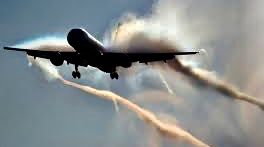 Yet the foremost ‘culprits’ are airliners, and the noxious contrails they leave behind. Indeed, environmentalists (and UNWTO) claim that getting on an airplane is “one of the worst carbon-offending acts a person can do.”
Yet the foremost ‘culprits’ are airliners, and the noxious contrails they leave behind. Indeed, environmentalists (and UNWTO) claim that getting on an airplane is “one of the worst carbon-offending acts a person can do.”
There’s the planes’ sound pollution, then their erosive proximity to the earth’s ozone layer. But the main malefactor is the carcinogen residue from carbon emissions out of jets’ fuel guzzling engines, in the aggregate raising hell with the planet’s atmosphere.
Point being, a welcome, salutary change of scenery is said to be inordinately leading to ‘disturbulent’ climate change.
Carbonomic Theory.
Consequently, a direct correlation is drawn between these CO2 emissions and massive melting of the Arctic ice cap. This accelerated sea melt is resulting in rising ocean levels, sinking islands, disappearing shorelines, and more frequent, ferocious tropical storms. Elsewhere, climbing surface temperatures have wrought the record shattering heatwaves gripping Africa, Europe, northward this summer—climate disruption around the world.
Yeesh, aviation alone is estimated to generate 2.5% of global emissions—projected to 5%—and that one flight from New York to Europe produces nearly three tons of CO2 per passenger. And yet, today’s Boeing and Airbus airliners are 70% more efficient than 30 years ago; and by comparison, ground transportation comprises some 16% of fossil fuel pollution.
☟Current Case In Point (1/16/20): Delta Takes a Leak Over L.A. …
![]() Talk about LAXity—or as one South Gate, CA resident put it: “I’ve had too many plane crash dreams lately to see this over my house.”
Talk about LAXity—or as one South Gate, CA resident put it: “I’ve had too many plane crash dreams lately to see this over my house.”
Her Instagram caption referred to the image of a Boeing 777-200 emitting long white contrails overhead as it descended on emergency approach to Los Angeles International Airport in nearby Inglewood.
Seems Delta Airlines Flight 89 was circling back to LAX a quarter hour after takeoff for Shanghai, its crew citing engine problems. But barely 16 miles east of the airport, the jet was still carrying a full fuel load, wing to wing—being way to heavy for a safe landing.
In the case of such aborted flights, pilots can land heavy, possibly damaging the aircraft; can circle to burn off fuel, or dump fuel through release valves on each wing tank that pump 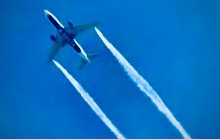 out by specific amounts.
out by specific amounts.
Flight 89 had chosen the latter option. Hence white contrails, except its streams weren’t water, but kerosene-like jet fuel—and the crew neglected to inform Air Traffic Control centers. The FAA requires that fuel must be jettisoned over “designated unpopulated areas at higher altitudes so that (it) atomizes, and disperses before it reaches the ground.”
That normally occurs at 5,000-6,000 feet plus, yet the Delta 777 was descending below such levels, spraying thousands of gallons of jet fuel over a five-mile stretch of elementary schools and a high school.
Some afflicted students and staffers were sent screaming for cover, 60 suffering breathing problems, headaches, skin irritation and fears of toxic exposure—but no one was hospitalized. Still, lawsuits are sure to be contrailing in.
The airline has already been cited by the South Coast Air Quality Management District for improper fuel dumping as a ‘public nuisance’. Otherwise, FAA and Delta officials are investigating this case of urgent LAXatives and egregiously leaking valves.
Perhaps in response, Delta now pledges to spend $1b over the next 10 years to go carbon neutral. (MTC…)
Green Screening.
So, what to do? Many alarmed environmentalists urge nixing far-away destinations altogether, in favor of nearby places, hills and dales. Keep it minimal—back to the familiar basics. Nature over cross-cultural nurture, they implore; savor the simple local pleasures, lean inward from the greater world, snugly and smugly tethered to place.
What’s more, these myopic NIMBY(S) ‘grounders’ and zealous eco-slugs say fly and cruise less—go fuel efficiently and electric, if you go at all. Really, hike or bike, arriving to preapproved eco-friendly places in healthier, better shape. As if stopping all flying will somehow save the planet. Whether shying away from exploring distant wonders and biodiverse terrain will counterbalance the lost travel/tourism revenue so many destination economies depend on for local livelihoods—let alone for conservation efforts toward treasured sites and endangered wildlife/species/habitats worldwide.
On the other hand, the footloose rest of us might choose the compensatory offset route. These increasingly popular carbon offsets constitute a system whereby airline passengers  can hedge their enviro debts by purchasing some (Kyoto Protocol sanctioned) credits, primarily added to a ticket price.
can hedge their enviro debts by purchasing some (Kyoto Protocol sanctioned) credits, primarily added to a ticket price.
The laudable idea here is to cut carbon dioxide and other greenhouse gasses by buying down emissions all over the planet. Which means applying those monies to sustainability or renewable energy efforts/projects (wind turbine, solar, biofuels, etc.) near and farther wide. Such offsets are largely measured in tons of CO2e—principally one ton of reduction in carbon dioxide or the equivalent in greenhouse gasses.
Guilt Tips: Fare and Foul.
As for making these offset contributions, there are compliance markets for corporations and other larger players; individual travelers are directed to smaller, voluntary markets.
A non-profit “Cool Effects”-type outfit usually sets and sells the offsets via a so-called carbon 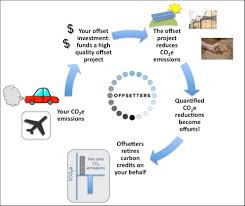 footprint calculator—or bootprint, as the case may be.
footprint calculator—or bootprint, as the case may be.
The prevailing formula: Take total emissions of a flight (based on past fuel usage), divided by the number of seats on the plane, multiplied by the cost of offsetting one ton of carbon. Typically, a six-hour coast-to-coast flight to LA would emit 0.29 metric tons of carbon per passenger (seat). Thus the offset would amount to a bit over $3 per full ton of carbon.
Certifying third-party organizations like Gold Standard or Green.e have emerged to look after these offset transactions. Call it conscience quelling on the cheap, just so long as the offset payment does in fact go to verified, productive purposes and programs (e.g., replanting of native forestry).
Incidentally, some airlines were high on the carbon offset plan early on, from Frontier’s “Fly Green” to KLM Royal Dutch Airline’s “Fly Responsibly.” Now one-third of all carriers offer offsets of some sort, as many environmentally upgrade their fleets to cleaner, more fuel efficient aircraft. UK’s EasyJet is pursuing net zero carbon dioxide offsets (£25m worth, 6% of anticipated profits), while British Air is said to be shooting for carbon neutrality by 2050. Incidentally, budget carriers already score as more fuel efficient, if not ‘environmentally sustainable’ than legacies, at the very least in terms of CO2 emissions per passenger miles flown.
offsets of some sort, as many environmentally upgrade their fleets to cleaner, more fuel efficient aircraft. UK’s EasyJet is pursuing net zero carbon dioxide offsets (£25m worth, 6% of anticipated profits), while British Air is said to be shooting for carbon neutrality by 2050. Incidentally, budget carriers already score as more fuel efficient, if not ‘environmentally sustainable’ than legacies, at the very least in terms of CO2 emissions per passenger miles flown.
One modest banking in that cleaner direction is the test flight in early 2020 by Etihad Airways of a 20% more fuel-efficient long-haul ‘Greenliner’, from Abu Dhabi to Brussels. The advanced Boeing 787 burns biofuel, and features lighter aircraft materials (no single-use plastics), serving to reduce air drag, and thereby fuel consumption by 5-10% per trip. Etihad claims this ‘flying lab’ is a “…small step toward moving the industry forward in a responsible fashion.”
For its part, Delta Airlines cites a need for green technologies to turn food waste into jet fuel and utilizing carbon dioxide pulled from the air—CEO Ed Bastian explaining that ‘decarbonization’ is more challenging because carriers presently lack the bio-fuels or other sustainable aviation fuels (SAFs) necessary en masse.
So Delta plans to approach net-zero goals by utilizing such processes as ‘Syngas’—in which CO2 is 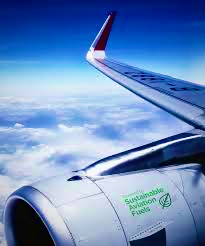 captured from ambient air, combined with water and reusable H2 hydrocarbons, then refined into jet fuels that release, or ‘recycle’ CO2 back into the atmosphere for further gathering. However, this ‘Syngas’ approach is derided by enviro-critics as mere hot air—an overly optimistic, costly band-aid years away—falling far short of realistically prioritizing green travel and reducing flights.
captured from ambient air, combined with water and reusable H2 hydrocarbons, then refined into jet fuels that release, or ‘recycle’ CO2 back into the atmosphere for further gathering. However, this ‘Syngas’ approach is derided by enviro-critics as mere hot air—an overly optimistic, costly band-aid years away—falling far short of realistically prioritizing green travel and reducing flights.
Nevertheless, it could be a start, made all the more telling since worldwide demand for jet fuel is projected to more than double by 2050, while the International Air Transport Association (IATA) predicts that passenger flights will rise from 4.5Bn (pre-pandemic) to over 10Bn by mid century. Indeed, Airbus expects the delivery of new cleaner, greener aircraft to carriers worldwide will reach nearly 40k by 2040, with rival Boeing sharing in that order book.
The Electric Avenue.
Confounding all this is the techno-challenging goal of fully electrifying commercial aircraft—problematic presently due to the weight and limited (little more than 250 nautical miles for the likes of AeroTEC). Still, Boeing and JetBlue are investing in Zunum Aero, a 50-seat (hybrid electric) regional jet slated for 2030; similarly, E-Fan X by Siemens and Rolls-Royce is due for test flights by 2021. Both experimental aircraft look to have a range ceiling of 2k nautical miles, depending on battery technology advances. Boeing is also currently touring an eco-friendly experimental aircraft that is predominantly data driven—details to come.
A Carbon Offsetting and Reduction Scheme for International Aviation (CORSIA), due by 2021, will have airlines offset carbon emissions over 2020 levels by buying carbon credits directly from environmental projects (albeit contributing voluntarily for the first six years). Add to that emerging carbon capture schemes such as small-scale carbon-dioxide sucking machines—Rube Goldberg though they may be.
Contrail/Chemtrail Travails: Purists vs. Pluralists?
Until then at least, eco-purists are bound to continue beating their ‘climatitis’ drums— chastising, if not demonizing venturesome travelers until global heat-dome hell freezes over—essentially lumping us in with methaning cows.
But with over four billion air passengers boarding per year (nearly 900 million, U.S.  systemwide), humankind ever and forever on the move, absolutist grounding is absolutely unlikely to happen. For not many of us have the resolute ideological wherewithal, much less time to command a zero emissions yacht.
systemwide), humankind ever and forever on the move, absolutist grounding is absolutely unlikely to happen. For not many of us have the resolute ideological wherewithal, much less time to command a zero emissions yacht.
In any event, Vamigré will stay on top of this whole blame toxicity/flight-shaming business—leavening, seeking and overseeing savvy, sensible solutions. Think of it as going green with envoy—thereby getting cleaner, greener as we go. Same time, we’ll be taking our tonic with a dash of Bombay. (MMTC…)
<<< TRAVIRONMENT: Climatitis, Sea to Sea.
